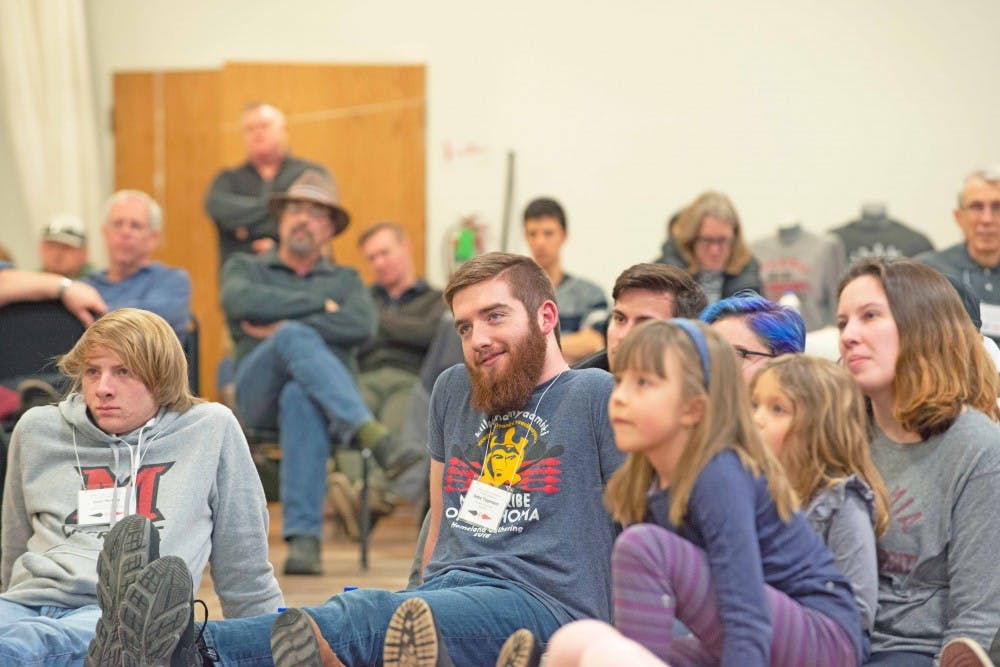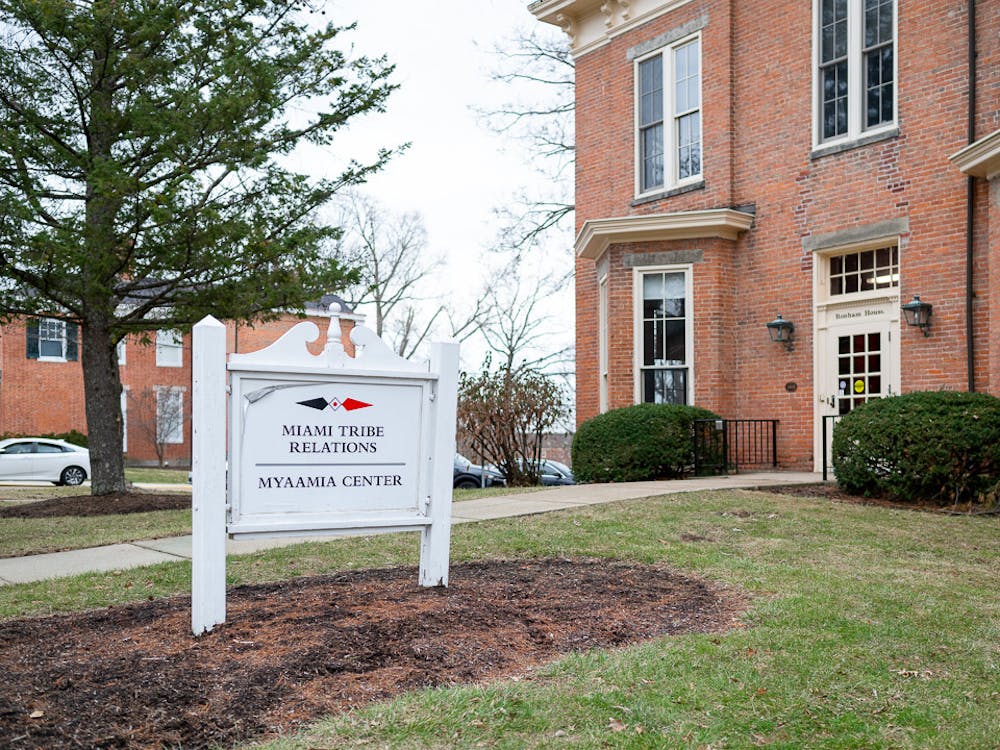The sun had set over the plains of Oklahoma when members and friends of the Miami Tribe of Oklahoma gathered in the tribe's spacious Council House to listen with rapt attention to the aalhsoohkaana: The winter stories.
The younger members of the tribe, from small children to young adults, sat cross-legged or sprawled across patterned blankets spread in the center of the room. Everyone else sat in rows of folding chairs on either side. All waited quietly as George Ironstrack, tribe member and assistant director of the Myaamia Center, adjusted his microphone and began the first story.
There would be no applause between stories and no interruptions. While Ironstrack and others did the storytelling, the audience would fulfill the important role of what Ironstrack called "story-listening" -- focusing fully on the tale at hand.
There are two types of stories in the Myaamia tradition: aalhsoohkaana and aacimoona, which are historical narratives. These stories were passed down by Myaamia storytellers -- called aayaalhsoohkiaki -- who told them to historians and linguists in the late nineteenth and early twentieth centuries, before the language went dormant. It wasn't until a little over a decade ago that members of the tribe began to perform the stories again.
Some of these stories only exist in English, while others still survive in myaamiataweenki, the language of the Myaamia, or in the languages of the Peoria and Wea tribes.
"Myaamia stories are the narratives of our lives," Ironstrack said. "The historical narratives are about recounting our lives as a people... The winter stories are connected more to our moral and metaphysical existence over time, as a people."
The aalhsoohkaana are only told during the winter, after the frogs have stopped singing and the first killing frost arrives. In the spring, once the frogs begin to sing again and the first thunderstorm rolls in, the storytelling stops until the next winter.
Traditionally, there was no need for stories in the summer, Ironstrack said. It was much too busy of a season for the tribe, which saved its stories to pass time in the cold, dark winter.
It is not improper to discuss and reference the stories during other parts of the year, Ironstrack said, but they should not be told and performed as they are each January during the tribe's Winter Gathering. The historical narratives, however, can be told year-round.
The stories are not meant to be recorded either in audio or video. Each storytelling experience is unique and contained within the moment of the telling.
"We are breathing life into these stories for this moment, for tonight, for our community, and it's meant to live just in that moment," Ironstrack said. "And then -- it's gone."
Ironstrack began with the opening oration. His father, George Strack, followed with a cautionary tale about what happens when the winter stories are told outside of their allotted time -- in it, the man who tells winter stories in the summer is attacked by giant frogs. Father and son were followed by five other tribe members who told stories both short and long, both morbid and funny.
Enjoy what you're reading?
Signup for our newsletter
Some of the winter stories end abruptly, leaving outsiders feeling as though the story is incomplete. Ironstrack said Myaamia stories are meant to be like building blocks - able to be put together, back to back, in any number of ways. In this manner, a skilled storyteller can seamlessly weave individual stories together into their own unique storytelling experience -- they decide when to begin and when to end.
"It takes a lot of time and effort to really, fully immerse yourself and to think through [the stories] from a Myaamia perspective and not from a... European perspective," Kara Strass, the Miami Tribe relations assistant at the Myaamia Center and a storyteller herself, said.
The personal touch of each storyteller was evident as the night went on. Ironstrack yielded the spotlight to six other tribe storytellers, including Strass and Jarrid Baldwin, community language program coordinator for the tribe.
Baldwin, an experienced storyteller, told several of his tales twice, once in myaamiataweenki and once in English. He changed his voice to imitate different characters, and got down on the floor to mimic what was happening in the story and capture the attention of the restless little girls in the front row.
Although storytellers can individualize their tellings of the tales, it is important that the core aspects of each story remain.
Many winter stories include talking animals. Several of the stories told at the Winter Gathering centered around recurring characters like the wily red fox who tricks his gullible brother, the gray wolf. More than one story included the character of Wiihsakacaakwa (pronounced we-saw-cuh-chaw-qua), a complex person or being who is sometimes the hero of the story and sometimes the butt of the joke.
Some of the stories are serious and end in death, but humor, too, is an important part of the winter stories. More than once throughout the night the storytellers drew laughs from the entire gathering.
Some stories reference French fur traders, which is evidence of how Myaamia stories evolved as the world around them changed, particularly due to European contact.
The underlying theme or moral in a given winter story is not always clear, and individual interpretations are respected. It's not about what the storyteller says, so much as it's about what the listener hears.
"One of the major powers of these stories is that they resist single interpretation," Ironstrack said.
There is great depth to the stories of the Miami Tribe, such that they cannot be easily understood in full. Like the literary tradition of any culture, appreciating the stories' depth takes much study and immersion.
"Who are these characters in these stories? Why are they doing what they're doing? What is that teaching us? What values is that imparting?" Strass said. "There's a lot of aspects that take a long time and a lot of effort before you can truly come to an understanding."




